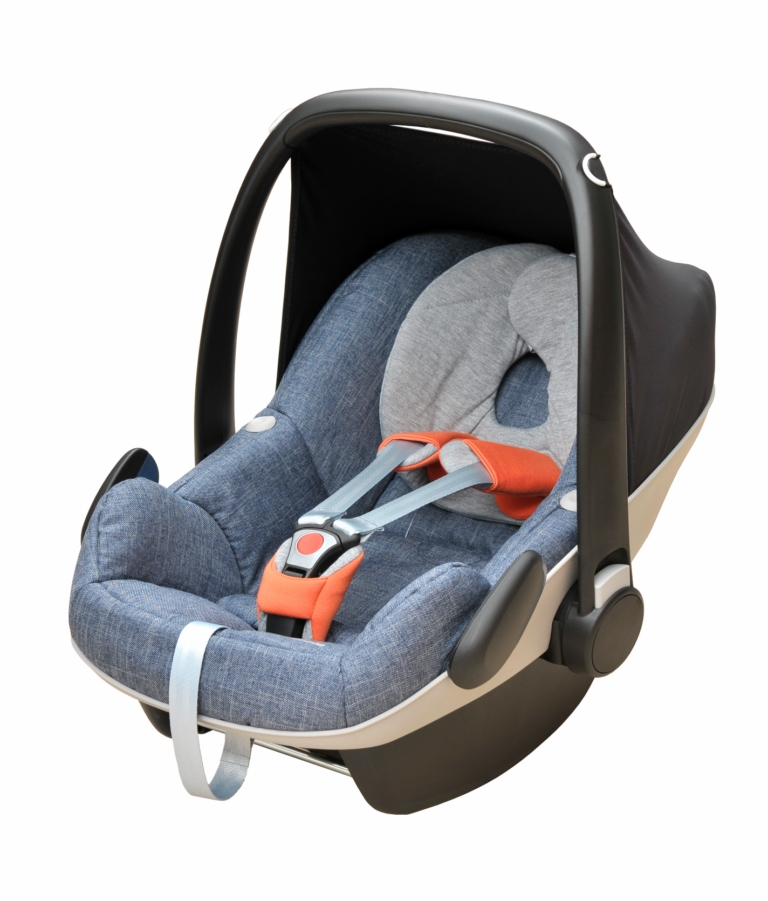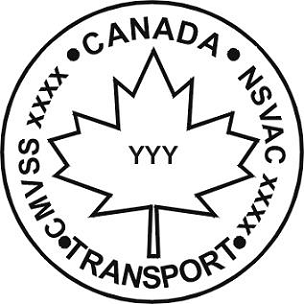b. Car Seats
Although you can purchase hundreds of items for your baby, it is important to know that only a few are mandatory. The car seat is one of these items.
The law requires that babies always ride in a car seat even on the first trip home from the hospital. As your child grows, he or she will need a new seat, followed by a booster seat. Booster seats are required by law, for children under the age of eight, weighing between 18kg and 36kg and are less than 145cm tall. Once a child exceeds any one of the above criteria they may be ready to use a seat belt alone. Check to make sure that when your child is sitting in the seat that the shoulder strap sits across the chest and shoulder bone and the lap belt sits across the hip bones and not across the stomach.
Even if you don't own a car, you will need a car seat for your baby when you take a taxi or travel with a friend. A car seat can also be used as a seat in the home.

1. A Safe Car Seat
Babies must travel in a baby car seat until they weigh 9 or 10 kg (20 to 22 lbs) - that is approximately around one year of age. The baby's car seat must face backwards and be anchored with the seat belt or the universal anchorage system (UAS). The safest place for the baby's seat is in the centre of the back seat. If there is an armrest in the middle of the back seat, place the car seat to the left or to the right of the armrest.
All car seats sold in Canada must comply with the Transport Canada norms. Do not buy a car seat without an instruction booklet, or without a national brand symbol certifying that the seat meets the standards.
Here is the national safety brand symbol.

Visits this site for more information about car sear in New-Brunswick
http://www2.gnb.ca/content/gnb/en/departments/public_safety/drivers_vehi...
2. Securing a Car Seat
To be safe, car seats must be installed and used in accordance with the manufacturer. Read the instructions carefully before using the car seat.
Before buying a new or used car seat, try it in your car. Be sure that you can install the car seat safely and that you can adjust the seat belt. Check to see if it is easy to use. Read the instructions and practice using the car seat.
Never use a car seat that is past the expiry date because materials deteriorate with time. Never buy or use a car seat that was involved in a collision.
Using a rear-facing car seat (for infants under 10 kg or 22lbs)
- Always follow the car seat manufacturer’s instructions.
- Rear facing car seats should face the back of the vehicle and rest on a 45-degree angle and move no more than 2.5cm (1in.) from side-to side.
- The shoulder harness straps must be threaded through the seat back at, or slightly below, the child’s shoulders.
- You should not be able to fit more than one finger underneath the harness straps at the child’s collarbone.
- The chest clip should be flat against the chest at armpit level.
- Keep your child in a rear facing car seat until he/she outgrows the maximum height or weight of his/her infant seat and then use an infant/child seat rear facing until he/she is at least 10kg (22lbs) and is able to walk.
For more information about car seats visit:
- http://www2.gnb.ca/content/gnb/fr/ministeres/securite_publique/conducteu... 1-506-453-2410
- Transport Canada: www.tc.gc.ca
 |
Never install a baby car seat equipped with an air bag. |